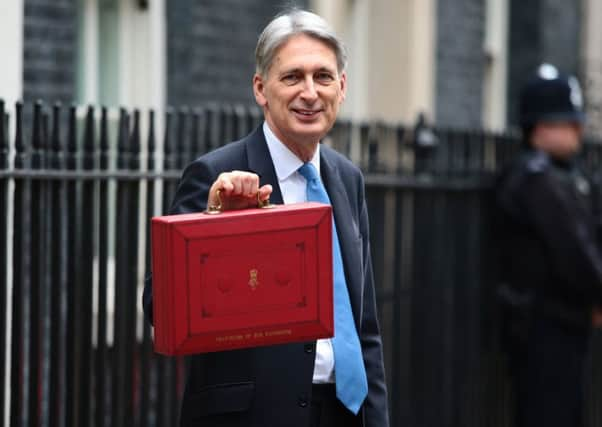Gareth Shaw: Chancellor thinks outside the box in Budget


This year, the Chancellor Philip Hammond seemed to take on some of the flourishes of his predecessor, producing some rabbit-out-the-hat theatrics at the end of his speech – the abolition of stamp duty for a genuine first-time buyer spending £300,000 or less on their dream home.
The build-up reminded me of the pre-Brexit George Osborne era – the steady crescendo of initiatives on property, from the reform of planning rules to the much-vaunted commitment to building 300,000 new homes a year. And, just as you thought it was going to end, the big reveal – some 95 per cent of new homeowners escaping stamp duty land tax altogether.
Advertisement
Hide AdAdvertisement
Hide AdThere is much to like about this policy. The accompanying government documentation that lays out the nuts and bolts of the deal categorically spells out that there’s no way for any previous homeowner to benefit from this stamp duty relief. If you’ve ever had a previous interest in a residential property, anywhere in the world, you won’t benefit from a stamp duty cut. If you’re buying a home with a partner that already, or had previously, owned a home, you don’t qualify. If you sell your current home, move back in with your parents and live like a monk for a year (as some readers have asked us, perhaps in the desperate hope of discovering a loophole in the new system), you still won’t be able to enjoy a stamp duty cut.
And this isn’t like Help to Buy – the incentive that allows people get a government loan to finance part of their purchase but is available for those who want to buy a home worth up to £600,000. If you can afford to buy a home worth more than half a million pounds, this new policy says, you don’t need stamp duty relief.
And there are quite significant savings to be had. The average first-time buyer home costs around £210,000, according to high-street lender Halifax. Under the old stamp duty rules, you’d pay nothing on the first £125,000, two percent stamp duty on the next £125,000, and then five per cent stamp duty on the remainder, leaving you with a total tax bill of £1,700. Under the new rules, you pay nothing.
Someone buying a £400,000 home, in London for example, will only pay five per cent tax on the excess above £300,000. That works out to a tax bill of £5,000 and a saving of £5,000. At this point I should state that these changes only apply to people in England, Wales and Northern Ireland. In Scotland, you don’t pay stamp duty - you pay Land and Buildings Transaction Tax. Rates are tiered in a different way; you pay no tax on the first £145,000, two per cent up to £250,000, five per cent on the next £125,000 and ten per cent on the amount between £325,001 and £750,000. Anything above that is subject to 12 per cent tax.
The Scottish Budget falls in December – we don’t currently know if there are plans to reform stamp duty in a similar way.
That’s the policy, but what about the reality? Yes, in the average home you may have an additional £1,700 you can put towards your first washing machine or sofa, but, according to the Office for Budget Responsibility, you’re likely to see your prospective new home correspondingly rise in price. House prices will rise by 0.3 per cent, says the OBR.
That makes sense. If estate agents and sellers know that if you’ve got more cash (theoretically), you’re going to be charged more for your home. You may find that you need to save more for a deposit – if you’re going to save £2,000 in stamp duty which results in your new home being £2,000 more expensive, a first-time buyer with a ten per cent deposit will need to find another £200.
But it does mean that buying that dream home, while being more achievable, will be more expensive, and that the main beneficiaries of the policy are likely to be sellers, not buyers.
Advertisement
Hide AdAdvertisement
Hide AdIt’s important not to take the stamp duty cut in isolation. The chancellor proposed a total package worth £44bn to improve the housing stock in the UK and make more homes available to first time buyers. The stamp duty cut is a tactical but welcome part of this, but alone would not solve the problem that people have getting their foot on to the first rung of the property ladder.
A tax cut will always deliver a fizzy rush of goodwill, but the hard part will be whether there are more new, younger feet hitting welcome mats in the years to come.
Gareth Shaw is head of Which? Money Online